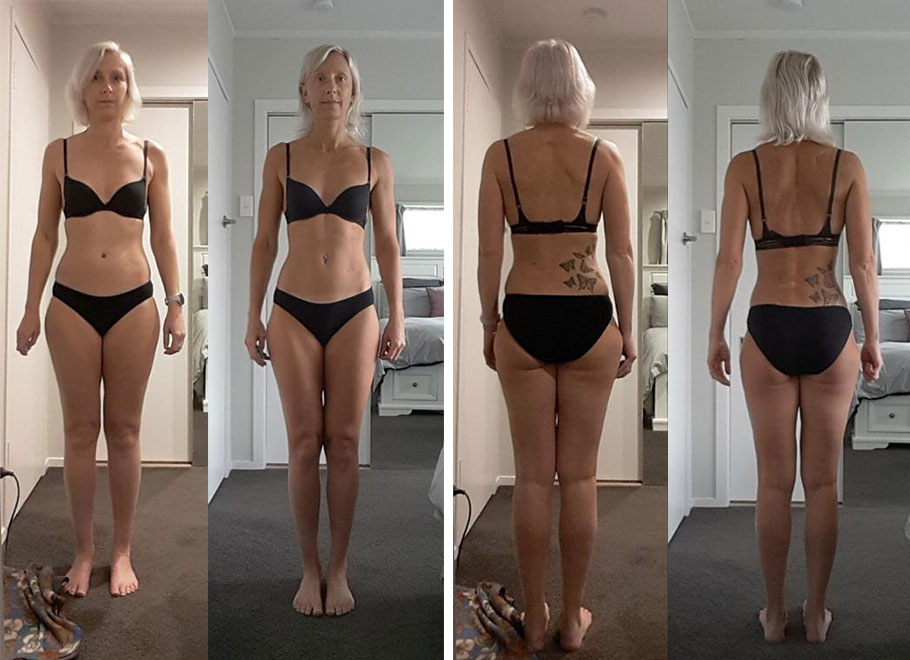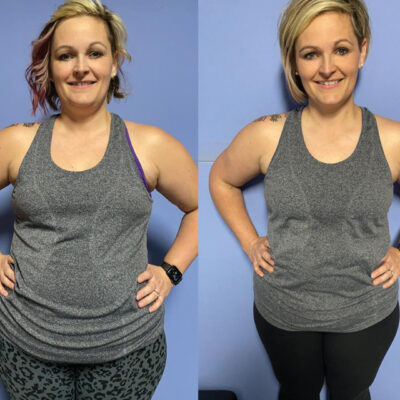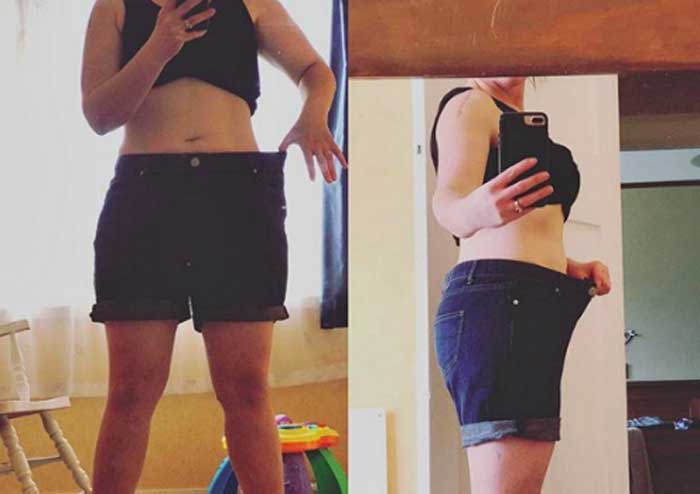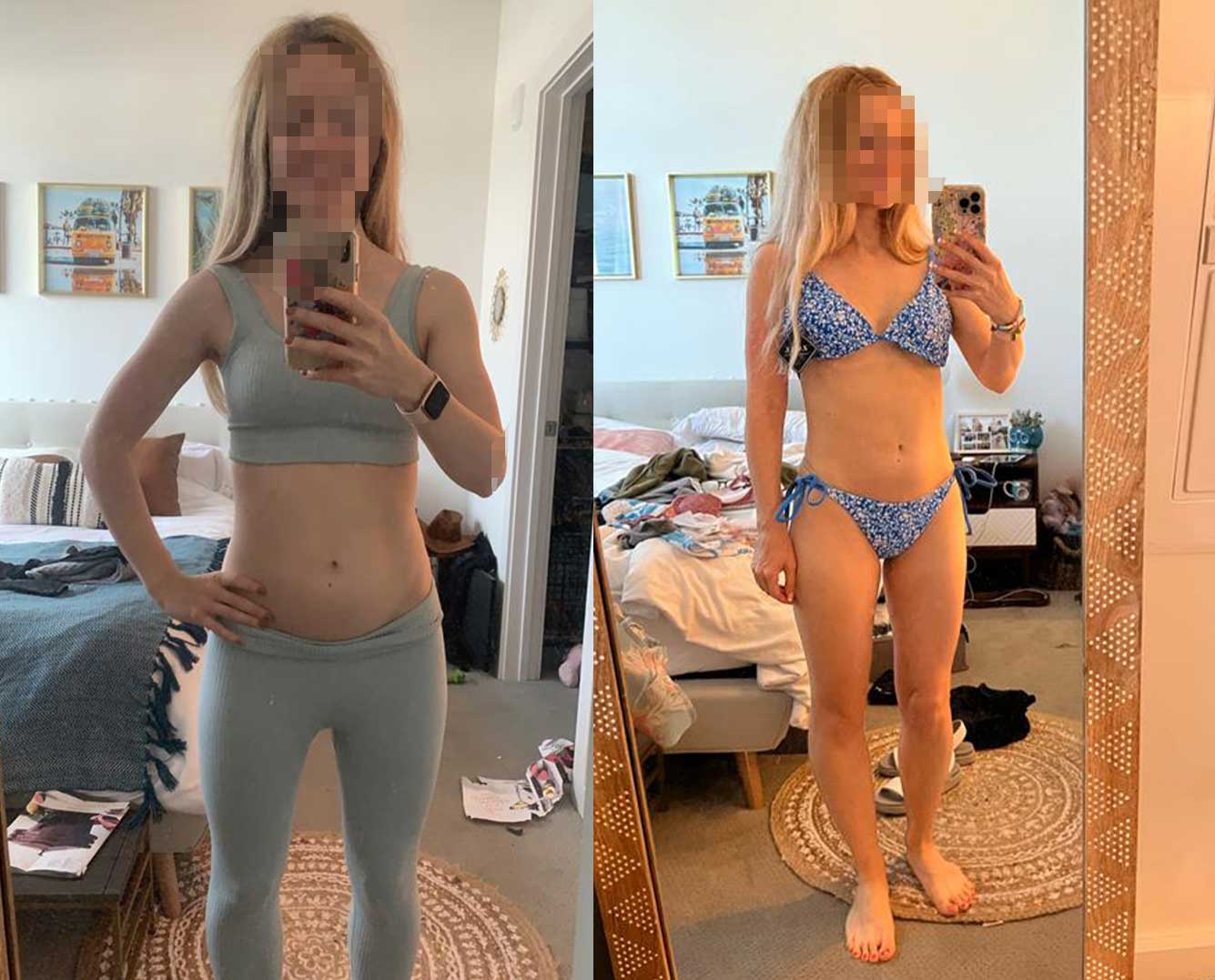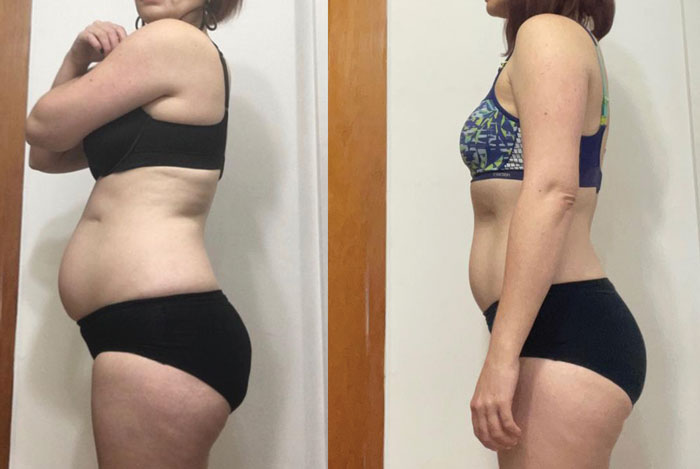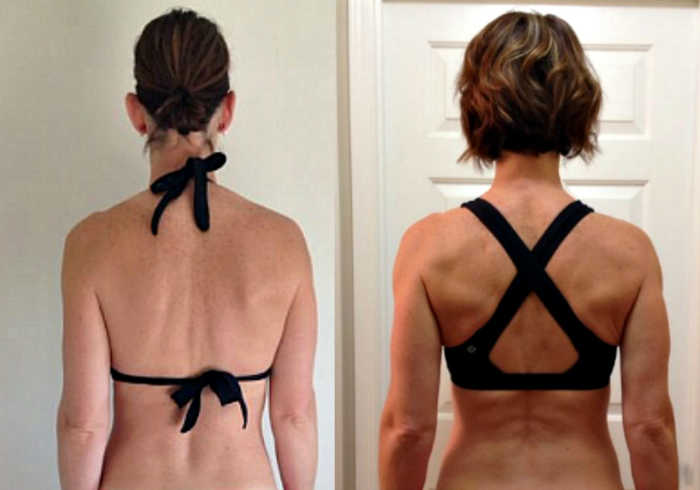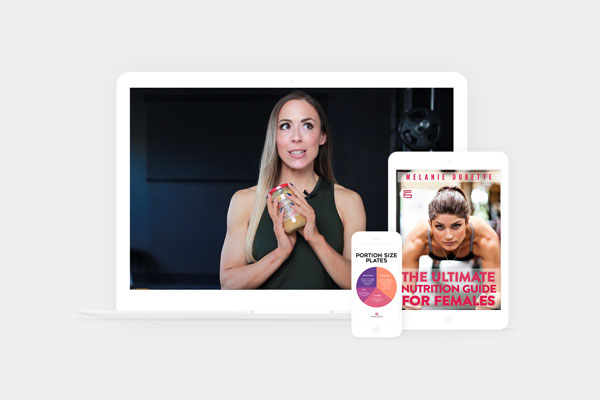Here’s what you need to know
1. Everyone has a sweet-spot when it comes to carbs and lower is not necessarily better.
2. No one loses weight in a perfectly linear fashion. Look for a downward trend over time – don’t stress out over small fluctuations and learn to identify the time of the month you may be heavier.
3. It usually takes longer than you expect to lose weight. Being patient and gentle with yourself is key.
Keeping your head straight
If you are trying to lose weight you’ve probably looked at and possibly even tried diets promising quick results. Many of you are likely counting calories now or have dieted in the past without really understanding the impact on your body and mind.
- Are you eating lower calories, lower carbs, or adding extra cardio to try to create a calorie deficit?
- Do you get moody or have cravings when you are dieting?
- Do you get frustrated if the weight on the scale doesn’t go down each week like you thought it would?
Sound familiar?
It’s hard to keep your head straight when you are dieting. Heck – even with my background in nutrition and psychology – I’ve had issues in the past. If your head is not working in your favour, it’s highly unlikely you will be successful at losing weight and keeping it off.
Here are three lessons I’ve learned personally and from working with women. They will help you get your head working for you.
1. Everyone has a carbohydrate sweet-spot and lower is not necessarily better.
When you are trying to lose weight, controlling insulin by lowering carb-intake is a good strategy. At the moment, Paleo, intermittent fasting and low carb diets are very trendy and it is easy to jump on board because these approaches not only promise weight loss but also better overall health and longevity. Influential leaders in the health and fitness industry are championing these approaches and they are getting awesome results.
However, not everyone reacts so positively to these approaches, and we are starting to hear more about how they may not suit women in particular.
So what’s a girl to do?
Well if you are going to jump on board Paleo or even just try to lower your carb intake, you need to become a self-experimenter.
Everyone reacts differently to carbs and the only way to find your sweet-spot is to monitor how you respond.
For example, if I go lower than 100g of carbs per day, I turn into an emotional wreck. Even if I make a conscious effort to have a low carb day and monitor my mood at some point I will end up emotional and/or cranky. I can lose weight on this amount of carbs but it feels pretty terrible.
By accident, I’ve found my body does best with over 250g of carbs per day. I was in Shanghai for a few weeks eating a lot of carbs because of all the rice we ate and surprisingly I lost 2 kg despite eating so much food! After more experimentation, I’ve realized I can eat between 250-300g per day. I can lose weight on this amount of carbs and it feels a whole lot better than when I’ve eating 100g in the past.
Now most women won’t be able to eat that many carbs. One of the reasons I can is because I have more lean muscle mass than most women and I weight train most days.
My point is that less carbs is not necessarily better. In fact, lowering carbs too much can increase cortisol which may block fat burning. Carbs also help us feel better mentally. So they definitely aren’t the enemy but it’s about finding your sweet spot.
2. No one loses weight in a linear manner. No one – not even you.
Don’t be so bloody hard on yourself.
Even with the greatest plan and dedication, no one loses weight in a perfectly linear fashion. Your weight is going to fluctuate downwards on some days and upwards on other days.
Too many other factors influence our weight – digestion, stress, water and sodium intake, time of day you weigh yourself and, for females, where you are in your menstrual cycle. If you worry about small upward fluctuations, you will just get discouraged.
Look for a downward trend in your weight. Ideally I like clients to aim for 300-500g per week but keep in mind that weight loss is never straightforward and rather more of zig-zag towards a lower weight.
You should also become aware of your mental state when you weigh yourself. If you weigh yourself at the gym, don’t make it the first thing you do. Wait until after you’ve trained. This means if you don’t see the number you want, you don’t start your workout in a bad mood.
This is also the reason I don’t weigh clients before training them. Actually I don’t weight clients at all. They can monitor it themselves in privacy.
If you have a trainer who insists on weighing you before every session, send them this blog post and don’t let them berate you for not losing weight according to some random standard they’ve set for you. I absolutely cringe when I see trainers at the gym putting their clients on the scale before every training session. I actually know trainers who will get mad at their clients if the scale doesn’t reflect a weight loss from week to week.
Almost every woman fluctuates around her cycle. You should track your cycle in addition to your weight so you can identify those times of the month you are regularly heavier. This will save you a lot of mental anguish when you see the scales go up and you can attribute it to your cycle. If you have a trainer who insists on weighing you it’s likely you will need to educate them on your cycle so that they can also understand your fluctuations.
I highly recommend all women use period tracking apps like Period Tracker, My Calendar (for Androids) and Clue (for iPhones). You can track your weight, mood as well as a whole heap of other cool things.
Learn more about monthly fluctuations: Why You Have Fat Days And What To Do About Them
3. It’s going to take more time than you expect and you need to be patient and gentle with yourself.
When you start losing weight people are going to tell you how great you look. You will begin to attach more importance to the number on the scale and how you look – but please make a promise to yourself that you will not do so at the expense of your health.
Your body is so finely tuned that when you lower calories and exercise more, your metabolism will adjust to slow everything down and fight against your efforts to lose weight.
As a result you will be tempted to lower calories even more and increase exercise to break plateaus. This is where trouble starts – emotional distress, cravings, low libido, malnourishment and even cessation of menstruation. Unfortunately, you’ll also get stuck and you won’t be able to break plateaus.
To get around this you need to ensure that your calories are not reduced too much and take it easy on the cardio. If you starting noticing significant drops in energy or any of the other problems mentioned above you may need to add in extra calories until you find that spot where you can lose weight but still feel energized and healthy. You may have to back off cardio or give it up altogether and start leisurely walking instead.
We all know about the importance of listening to our bodies – but never more so is this crucial as when we embark on a weight loss plan.
Let me give you an example from my own experience of how this might play out. Getting ready for my photoshoot last year, I had lowered calories to about 1,800 per day and started doing high intensity cardio 3 times per week (when I normally ate about 2,500+ calories per day and did cardio about once per week). After a few weeks of this, I found I was extremely tired during the day, especially after I had trained. I did not have my normal energy to get out of bed in the mornings. I was emotional and crying a lot. And then, because I didn’t listen to these signs and kept pushing, my period did not come. Well, that was a real slap back to reality.
I increased calories to 2,100 per day, stopped cardio and slept 9 to 10 hours each night until my body rebalanced. The end result? I lost weight and busted the plateau I had hit, my energy and mood improved, and I got my period.
At the end of the day it’s not just about calories in versus calories out. It’s about making sure that when you are putting your body through extreme stress (ie. dieting) you have all other systems in place to keep yourself healthy.
Less really is more and your body will let you know when you’ve gone too far. You just have to listen to it.
What this means for you
If you’ve been on the weight loss rollercoaster for a while, you might not like what I have to say because I’m NOT promising a quick fix.
Slow progress beats extreme but short-lived effort every time.
Healthy weight loss is about being patient and gentle with yourself. If you add a stressed brain to a body already stressed from dieting you have a recipe for disaster or, in the least, a very unhappy woman.
In fact, I don’t normally like to use the word “diet”. Rather I encourage clients to think of long-term nutrition change that will be sustainable and enjoyable so that they can maintain their weight loss and get off the rollercoaster for good. It has to be something you can do for the long run.
Listen to your body and adjust what you are doing accordingly to keep your weight loss as healthy as possible. Don’t forget to celebrate the small successes along the way and by all means, get some help from nutrition professional if you are struggling or unsure about how to set and hit healthy goals for yourself.
For more about losing weight the health way, you can download my free ebook here.



